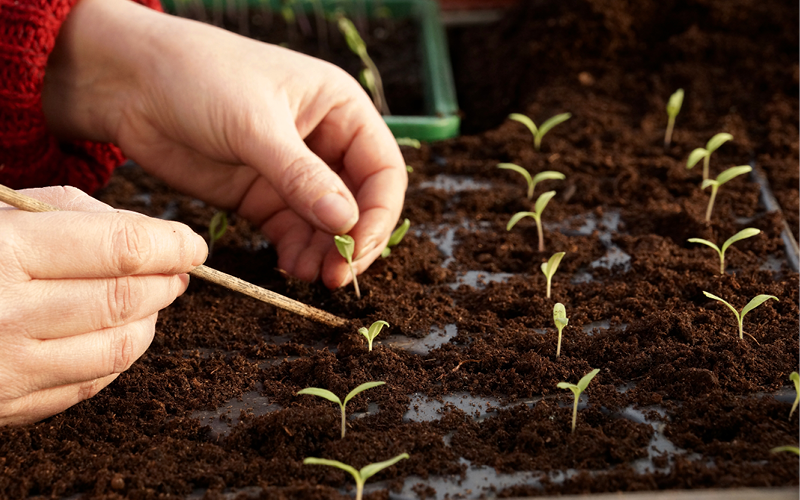Vegetable garden in March: These tasks are worthwhile now – sowing, planting & raising
March marks the transition from winter to spring and is the ideal time to prepare your vegetable garden for the coming season. From tilling the soil to sowing and caring for existing plants, there's plenty to do now.

1. Prepare beds and improve soil
Start by clearing your beds of weeds and plant debris. Loosen the soil thoroughly and work in mature compost or organic fertilizer to increase soil fertility. Well-prepared soil lays the foundation for healthy plant growth and a bountiful harvest.
2. Direct sowing of cold-tolerant vegetables
Some robust vegetable varieties can be sown directly outdoors as early as March:
Carrots:Early varieties are ideal for sowing in March.
radish:Fast-growing and ideal for early planting.
spinach:Hardy varieties soon produce fresh leaves.
Peas:Early varieties are suitable for sowing in March.
Make sure to sow the seeds according to the respective sowing instructions and keep the soil evenly moist.
3. Pre-culture on the windowsill
Heat-loving plants should now be grown indoors so that strong young plants can be planted outdoors later:
tomatoes:Proven varieties produce aromatic fruits and are known for their high yields.
Paprika:Both sweet and spicy varieties benefit from early sowing.
Eggplants:Require a long development time and should therefore be preferred early.
Use potting soil and place the containers in a bright, warm location. Keep the soil evenly moist, but avoid waterlogging.

4. Planting onion sets and shallots
Onion sets and shallots can be planted starting in mid-March. Choose a sunny location with loose, nutrient-rich soil. Plant the onions so the tips just barely peek above the soil, and keep the soil evenly moist.
5. Caring for strawberry plants
Remove old leaves and weeds from the strawberry beds. Gently loosen the soil and mulch the plants to retain moisture and suppress weed growth. Fertilizing with organic berry fertilizer promotes growth and fruit formation.
6. Prune and care for fruit trees
March is the last opportunity for winter pruning of fruit trees such as apple and pear trees. Remove dead or diseased branches and thin the crown to ensure better light and ventilation. Treat larger pruning wounds with a wound closure product to prevent infection.
7. Plant early potatoes
Pre-germinated early potatoes can be planted in the ground starting in late March. Choose a sunny location and loosen the soil deeply. Plant the tubers about 30 cm apart and at a planting depth of 10 cm. Mound the rows to retain heat in the soil and promote growth.
Frequently asked questions about the vegetable garden in March (FAQ)
What can you sow in the garden in March?
In March, direct sowing of cold-tolerant vegetables such asradish,spinach,Carrots,chardorspring onions. Also firstFlowers such as cosmos orjewelry basketcan be sown in pre-culture.
Which gardening tasks are particularly important in March?
In March you shouldPreparing beds,Planting early potatoes,Pre-grow vegetables,Pruning fruit treesandCaring for strawberry plantsNow the foundation is being laid for a successful harvest season.
Can you start growing tomatoes in March?
Yes,Tomatoes should be grown indoors from MarchA bright, warm location (at least 20 °C) and potting soil are important. After the Ice Saints, they can be planted outdoors.
Which flowers can you sow in March?
Manyannual summer flowerscan now be sown in pre-culture – for exampleZinnias,jewelry basket(Cosmos),Globe amaranth,hare earorSweet peas.
Can you plant onion sets yet?
Yes,from mid-Marchis the ideal time toTo plant onions and shallots– in a sunny spot in loose, humus-rich soil.
What do you have to consider when planting early potatoes in March?
If you use pre-germinated tubers, plant them approximately10 cm deep with 30 cm spacing, and hill the rows well. A sunny location promotes growth.











































































































